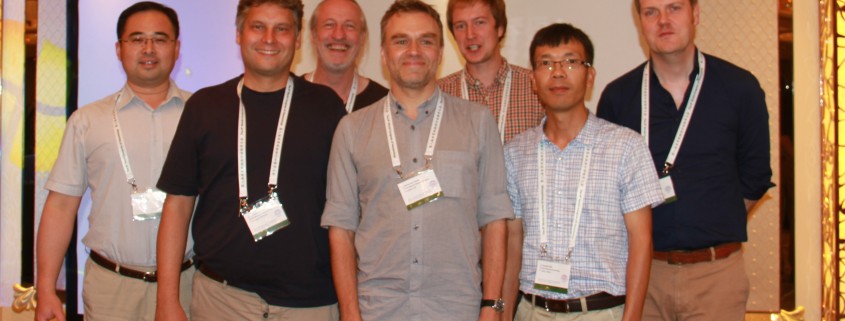Reaseheath herpetologist speaks at World Congress in China
Reaseheath herpetologist Simon Maddock was among international experts to speak at the 8th World Congress of Herpetology, held in China last month.
Simon, a former Reaseheath student who has now joined our lecturing staff, is recognised globally for his research on the ecology, conservation and evolution of Seychelles caecillians (legless amphibians), a subject he studied for his PhD. He was one of six invited speakers at the Caecilian Symposium, where he presented his findings on his speciality to an audience of fellow scientists from around the world. Other speakers included representatives from London’s Natural History Museum, the world leader in caecilian biology.
Simon, who is a Course Manager for our Level 3 Extended Diploma in Animal Management, was also able to spend time at the five day congress networking with fellow scientists, discussing potential global collaborations and learning about state-of-the-art research. His congress registration fee was funded through Reaseheath’s Scholarly Activity Fund and he will use his experiences to help with the delivery of lectures and for running research projects for undergraduates and Further Education students.
He explained: “Taking part in these conferences gives you the chance to interact with world renowned biologists. Following my talk I received a lot of approaches from delegates keen to exchange ideas and form research partnerships, and these could greatly benefit our students as well as the species we are studying.”
Simon completed his Level 3 National Diploma in Animal Management with us in 2007 and went on to volunteer with the Madras Crocodile Bank Trust in India, where he helped to care for 600 captive crocodiles. He then completed a Masters degree in zoology at Bangor University before moving to London to study for his PhD, which was jointly funded by the Natural History Museum and the University College London.
He has previously given a talk about the evolution of Seychelles amphibians and snakes at similarly prestigious conferences including Evolution which was held in North Carolina, USA. His published research can be found here.
Simon was also the author of a top trending scientific article after identifying a new Australian species – a highly venomous snake called the Kimberley death adder.
He also discovered a new species of leaf litter lizard from the Ecuadorian Andes, the Yumbos riama lizard, after studying the country’s reptiles and amphibians.
Caption: Simon and other international speakers at the Caecilian Symposium, which was part of the World Congress of Herpetology



